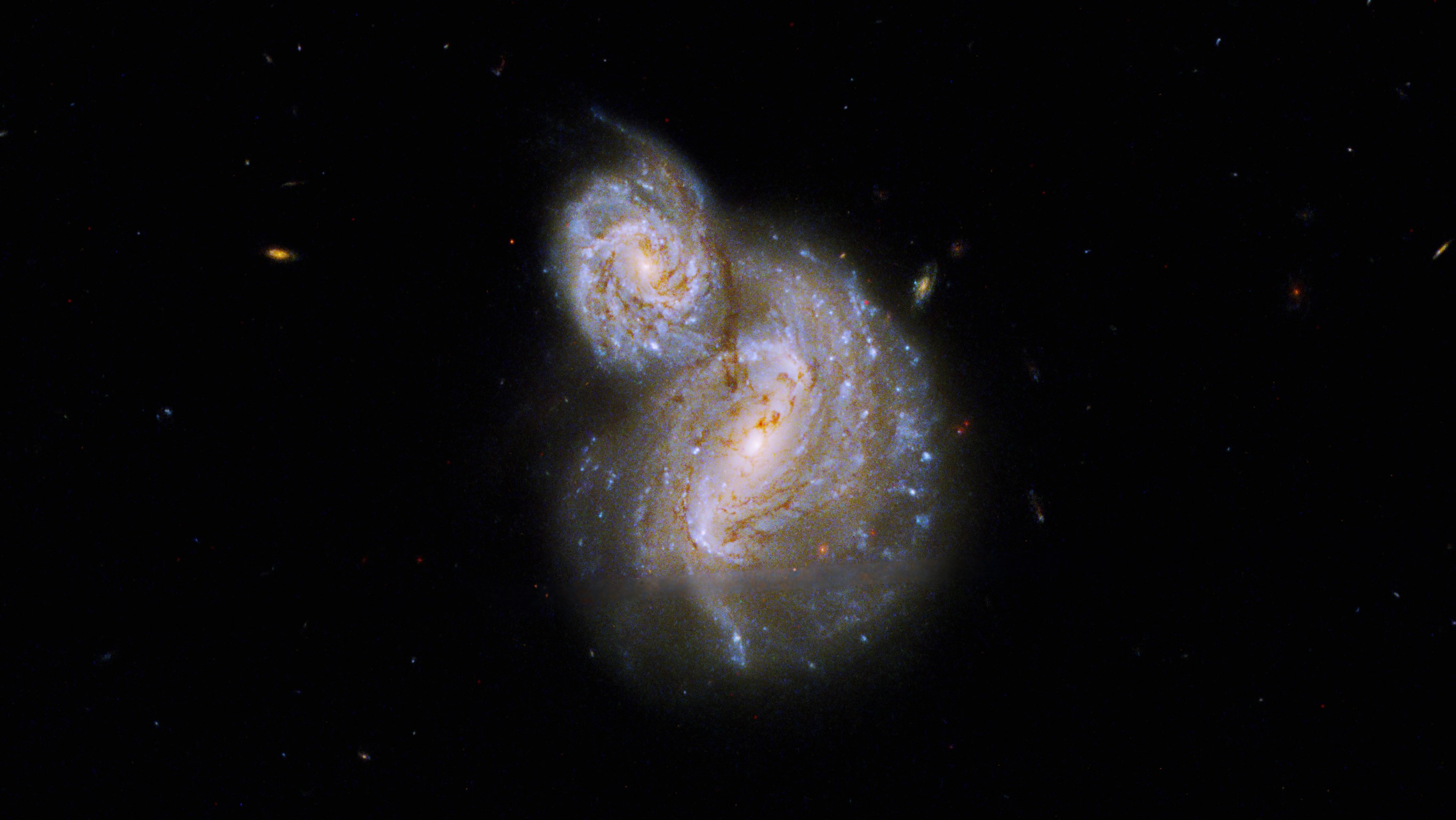Hubble telescope snaps trippy new view of two swirling galaxies
A peculiar pair of galaxies swirls together in a mesmerizing new photo from the Hubble Space Telescope.
Located some 800 million light-years from Earth, the two spiral galaxies, known as IC 4271 or Arp 40, appear superimposed, with the smaller galaxy in front of its larger companion. The larger galaxy is classified as a Seyfert galaxy, a type of galaxy with an active core, according to a statement from NASA, which released the image May 20.
About 10% of all galaxies may be Seyfert galaxies, which are named for astronomer Carl K. Seyfert, who described these spiral galaxies with very bright emission lines back in the 1940s, according to the NASA statement.
Related: The best Hubble Space Telescope images of all time!
An active galaxy is one that has a supermassive black hole at its center. This monster black hole pulls in surrounding gas and dust, and as the black hole consumes this material, it releases vast streams of radiation, fueling the active core observed by the Hubble Space Telescope. The larger of the two galaxies in IC 4271 is believed to be a Type II Seyfert galaxy, meaning it is a very bright source of infrared and visible light, according to the NASA statement.
"The active cores of Seyfert galaxies are at their brightest when observed in light outside the visible spectrum," NASA officials wrote in the statement.
The recent image of IC 4271 was taken using
Hubble's Wide Field Camera 3, whose sensitivity and powerful resolution allowed researchers to get a detailed view of the galactic pair. These data were used to map the dust disk of the smaller galaxy, which lies in the foreground of the image. The galaxy's dust disk — which feeds its central black hole — was mapped in fine detail across ultraviolet, visible and infrared light, according to the statement.
Breaking space news, the latest updates on rocket launches, skywatching events and more!
"Because IC 4271 is a Type II Seyfert Galaxy, visible and infrared wavelengths of light dominate the image," NASA officials wrote in the statement. "The colors in this image are primarily visible light, while the color violet represents ultraviolet light and red represents near infrared light."
Hubble's observations of IC 4271 were collected as part of a larger study to investigate the role of dust in shaping the energy distributions of low-mass disk galaxies. IC 4271 is one of six pairs of galaxies observed by Hubble in which one galaxy was located in front of the other.
Follow Samantha Mathewson @Sam_Ashley13. Follow us on Twitter @Spacedotcom and on Facebook.

Samantha Mathewson joined Space.com as an intern in the summer of 2016. She received a B.A. in Journalism and Environmental Science at the University of New Haven, in Connecticut. Previously, her work has been published in Nature World News. When not writing or reading about science, Samantha enjoys traveling to new places and taking photos! You can follow her on Twitter @Sam_Ashley13.

